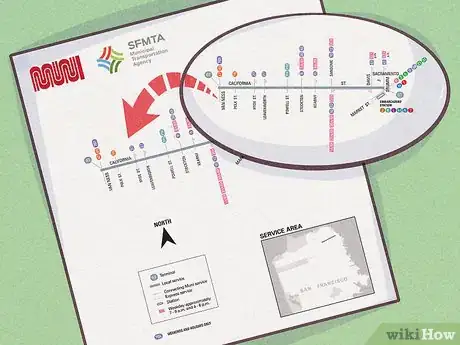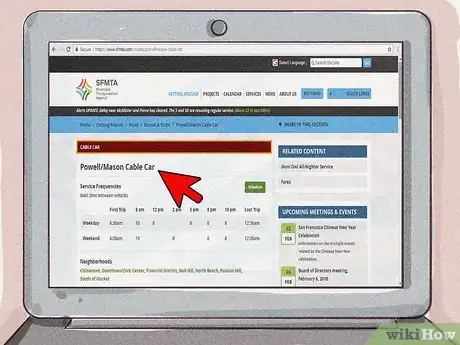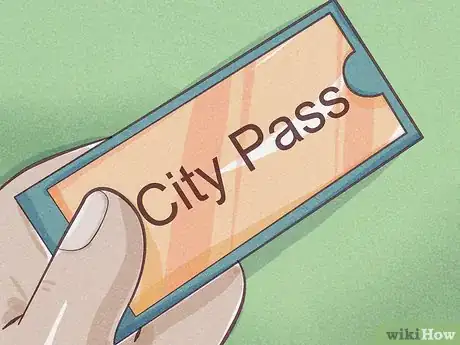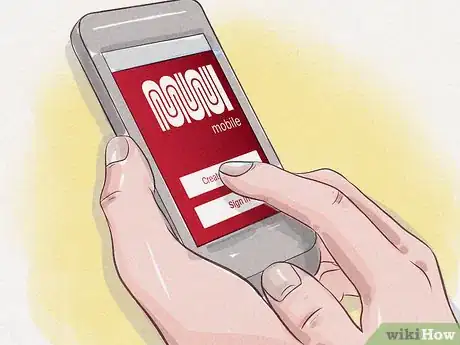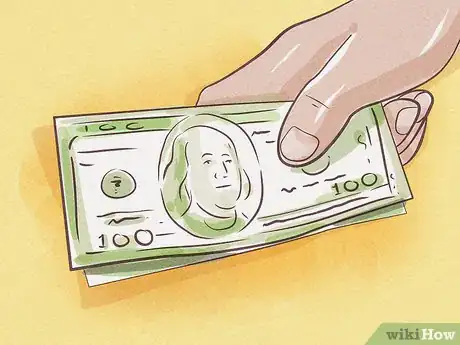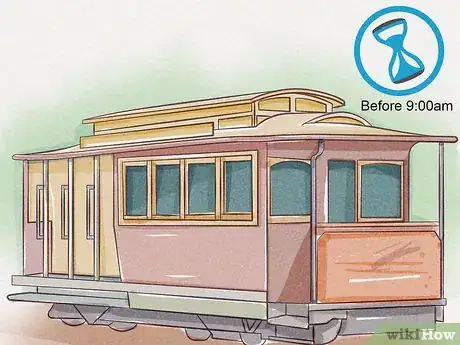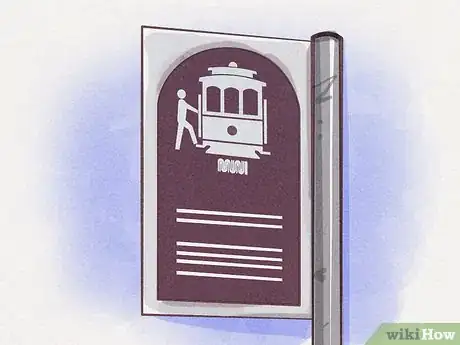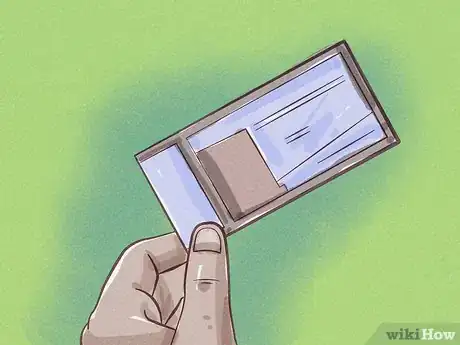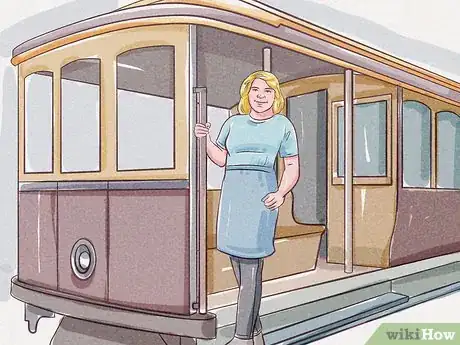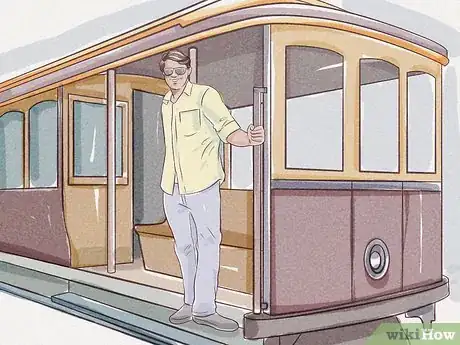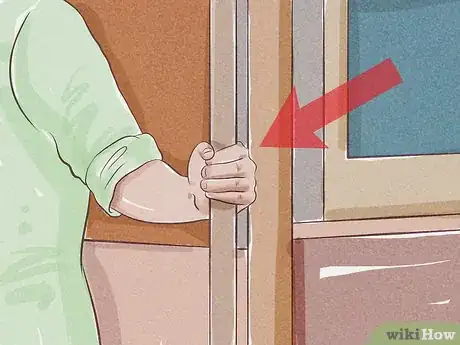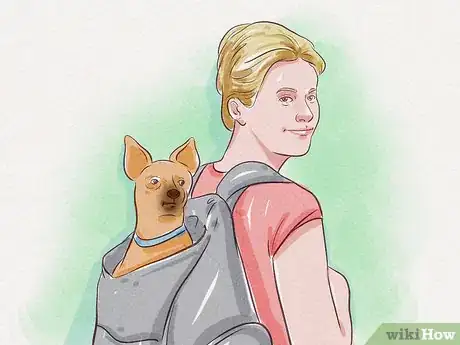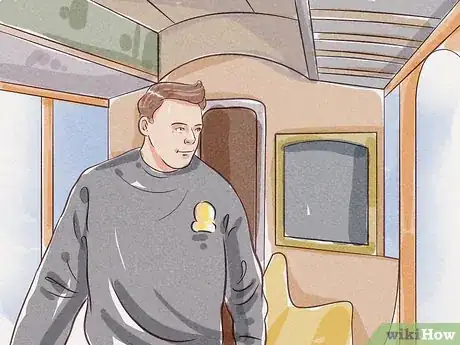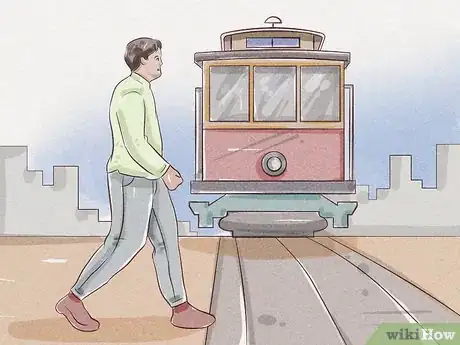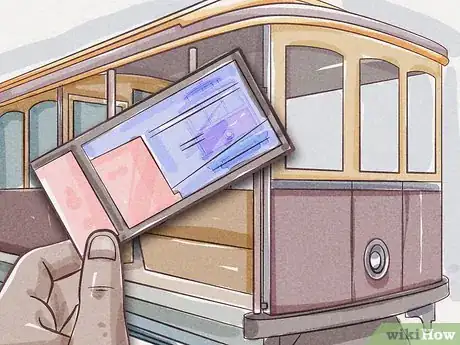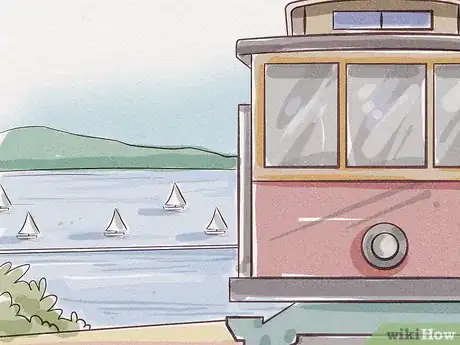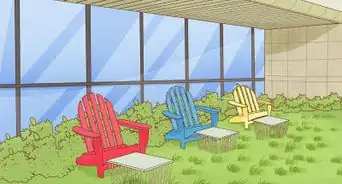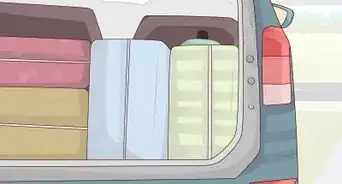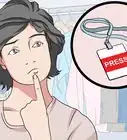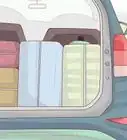This article was co-authored by wikiHow Staff. Our trained team of editors and researchers validate articles for accuracy and comprehensiveness. wikiHow's Content Management Team carefully monitors the work from our editorial staff to ensure that each article is backed by trusted research and meets our high quality standards.
There are 8 references cited in this article, which can be found at the bottom of the page.
This article has been viewed 26,637 times.
Learn more...
San Francisco’s iconic cable cars began operating in 1873 and have been a city staple ever since. They’re so beloved that they were named one of only two National Historic Streetcar Landmarks in the U.S! Seeing San Francisco by cable car will not only save your legs from hiking San Francisco’s steep hills, but will also help you see this beautiful city in a memorable, unique way.
Steps
Choosing a Line
-
1Choose the Powell/Mason line to stop near Fisherman’s Wharf. This line starts at Powell Street and winds towards Fisherman’s Wharf. It passes by the base of Lombard Street, also known as “the world’s crookedest street,” so you can look up and see a picture-perfect view of the twisting road. If you take the line all the way to the Wharf, you’ll be surrounded by great restaurants to grab a sit-down meal or a quick snack.[1]
- To see a map of the Powell-Mason line, use this link: https://www.sfmta.com/sites/default/files/pm-ph_mason-hyde_pdf_0.pdf
-
2Take the Powell/Hyde line to go to Ghirardelli Square or Lombard Street. The Powell/Hyde line begins right near the Powell/Mason line but takes a few different turns. The line ends near Ghirardelli Square, where you can get ice cream and chocolate or go shopping. It passes near the top of Lombard Street, where you can get off to take a look at the famous road or stay on to see a great view of Alcatraz Island.[2]
- This line will also end near Fisherman’s Wharf, although the Powell/Mason ends a bit closer.
- Use this link to see a map of the Powell/Hyde line: https://www.sfmta.com/maps/powellhyde-cable-car-pdf-map
Advertisement -
3Hop on the California/Van Ness line to check out the Nob Hill. This line heads through the Financial District to the top of Nob Hill. If you get off here, you can roam through some of the luxury hotels in the area and enjoy beautiful views of the city from their top floors. At other stops, you can enjoy beautiful cathedral architecture, bars, and lots of shops.[3]
- Unlike the Powell lines, this car has no turnaround. It will stop at Van Ness Street and simply had back the other way.
- You can view a map of the California line here: https://www.sfmta.com/sites/default/files/c_california_pdf.pdf
-
4Check the line schedule to see how often cars arrive. The cars operate from about 6:30am until just after midnight, although the Powell/Hyde line starts at 6:00am. For the most part, cars arrive every 6-10 minutes. On weekends or late at night, they might come every 10-15 minutes. They might run behind schedule on rainy days, since they need longer to slow down on the wet tracks.
- For a Powell/Mason line schedule, use this link: https://www.sfmta.com/routes/powellmason-cable-car
- For a Powell/Hyde line schedule, see this link: https://www.sfmta.com/routes/powellhyde-cable-car
- To see a California/Van Ness line schedule, click here: https://www.sfmta.com/routes/california-cable-car
Buying a Ticket
-
1Buy a Visitor Passport if you’re in town for a while. A Visitor Passport gives you unlimited rides on the cable cars as well as on streetcars, Muni busses, and Muni Metro. You can buy the pass for 1, 3, or 7 consecutive days of use. A 1-day Passport is $12, a 3-day Passport is $29, and a 7-day Passport is $39 on the MuniMobile app.[4]
- You can buy Visitor Passports on the MuniMobile app and at sales locations throughout the city. A map of sales locations is available here: https://www.sfmta.com/where-buy-sfmta-products?field_related_fares_target_id=618
- Prices are subject to change.
-
2Get a CityPASS if you want to explore museums too. This pass comes with an admission ticket to many different tourist attractions, including California Academy of Sciences, Blue & Gold Fleet, plus your choice of any two out of the Aquarium of the Bay, San Francisco Zoo & Gardens, The Walt Disney Family Museum, and the Exploratorium. It can be bought online at the CityPASS website: https://www.citypass.com/san-francisco?mv_source=muni&campaign=fares[5]
- You can also buy a CityPASS at any of their partner attractions. Visit their website to see what attractions qualify.
- Though this option is pricier, it could be worth it if you want to see lots of museums and attractions. At some destinations, you may also be able to skip the line.
-
3Buy a ticket through the MuniMobile app for convenience. Download the app to your smartphone and buy a ticket using a credit card, debit card, or your PayPal account. This is the only way to buy tickets ahead of time and online, so it might be the most convenient for some riders. Simply show the ticket on your phone to the driver when you board.[6]
-
4Use a Clipper Card if you use SF public transportation often. If you live in the Bay Area or if you’ll be there for more than 2 weeks, the most convenient option may be a Clipper Card. You can buy a card for $3 at retailers around the Bay Area or by ordering it online. You can use your Clipper Card for all Bay Area public transportation, including the cable cars, BART, CalTrain, and MUNI.[7]
- You can add money to your card online, over the phone, or in person at a retailer.
- To see where you can purchase a Clipper Card, take a look at this map: https://www.clippercard.com/ClipperWeb/map.do
- You can order a Clipper Card online here: https://www.clippercard.com/ClipperWeb/getTranslink.do
-
5Pay the driver in cash for a single trip. A single ride for both adults and children costs $7. Seniors and disabled riders can pay $3, between the hours of 9pm - 7am. You can give your money to the cable car’s conductor as you board.[8]
- You can also purchase a single ride ticket at ticket booths around the Powell and Market Street turnaround, as well as the Hyde and Beach turnaround.
- Remember to bring small bills along, as change is often not available.
- This might be the easiest option if you’re only taking one trip on the cable car.
Hopping On Board
-
1Get to the turnaround before 9:00am during summer tourist season. The cable cars can get extremely crowded during peak tourist season in the summer, and riders that board at the main turnaround stops often wait in long lines before they can get on. To avoid this, get to the turnaround before the big crowds show up and see the city in an early, more intimate setting.[9]
-
2Board at a turnaround to enjoy the full route. The cable car turnarounds, also known as turntables, are at the beginning and end of each route. Boarding here will get you the best value for your money, since you’ll be able to enjoy the full route instead of joining midway through the ride.[10]
- Only the Powell lines use a turnaround, because they only have one grip end to hold the cable with. The California line has a cable grip on either side, so it can simply reverse and head back down the route. You can still board at the end or beginning of the line, but you won’t get to see the cars being turned.
- The turnaround for both Powell lines is at the intersection of Powell and Market Street, near Union Square.
-
3Get on in the middle of the route for a shorter wait time. Look for a cable car stop, which will be indicated with a brown and white sign that says “MUNI Cable Car Stop” and provides the line information. The car will stop for you, so you don’t need to wave it down. You’ll have to pay the full fare and will have to get off at the end of the route, no matter how late you got on.[11]
- There will be less of a line at a stop than at a turnaround, but you might have a hard time finding a seat during tourist season since most other passengers are already on board.
-
4Have your ticket or fare out to show the attendant. Once you’re on board, take a seat or find your standing area. Get out your ticket or get ready to pay your fare, as an attendant will be coming around to collect them.[12]
-
5Don’t try to bring your bike on board. Neither full-size bicycles or folding bikes are allowed on the cable cars. If you need to transport them, look into other Muni routes--they’re allowed on all Muni busses.[13]
Choosing a Seat
-
1Sit in the interior for the most comfortable ride. Once on board, you can sit in the outside or inside seats, or stand in the back or on either side. The interior seats will be the warmest and most comfortable, but you won’t have as good of a view as the outer seats or standing areas.[14]
-
2Stand and hold one of the outer poles if you feel adventurous. Hold tight to the pole and take a firm, stable stance on the footboard. Keep your feet and arms tucked up against you and watch the road to avoid any accidents. You’ll be a bit exposed here, but you’ll have a great view and get to enjoy the classic cable car experience.[15]
- To get the very best views, stand on the running board at the front of the car.
-
3Sit on the side facing the bay for the best views. In the Powell cable cars, sit or stand on the right side when you’re leaving downtown, or on the left side as you’re leaving Fisherman’s Wharf. This will give you the best views of the Bay as you trundle up and down the hills.[16]
-
4Hang on tight and keep your bags nearby. The cars can get a bit jerky, which might cause your to trip or your bags to slide. Hold your bags in your lap or between your legs. If you’re standing, keep a firm grip on the pole and keep yourself balanced by standing with your feet shoulder-width apart.[17]
-
5Hold your service animal in your lap in the interior of the car. If you can’t keep your service animal in your lap, make sure it’s as far out of the aisle as possible. If you must ride in the exterior area of the car, you’ll have to keep your animal on your lap for their safety.[18]
Transferring Lines and Disembarking
-
1Tell the driver your stop if it’s a slow day. As you board the bus, let them know what stop you’re getting off at. You can also walk up to them as you near the stop, but try to do so while the car isn’t moving. Cable car drivers typically pull over at every stop, and they will always stop if it’s tourist season or the bus is crowded. If the car isn’t very full, though, it’s best to tell them your stop to make sure they’ll pull over when it’s time.[19]
- If you must get up while the car is moving, walk slowly and carefully. Hold on to the seats and poles for balance as you pass.
-
2Wait for the car to come to a complete stop before exiting carefully. Check the street as you get out, making sure there are no cars nearby. Stop, listen, and check both ways before you cross the cable car intersection. Remember that the green “X” signal on a cable car traffic light is telling cable cars to go, not pedestrians![20]
-
3Disembark at the Powell stop to easily transfer. If you want to try more than one line, it’s easiest to do so on the Powell lines at either turnaround. If you’re boarding the other line, you’ll need to buy a new ticket.[21]
- You can also transfer to other forms of public transportation at the Powell and Market Street turnaround. For a full list of possible transfers, look at the Powell line map: https://www.sfmta.com/sites/default/files/pm-ph_mason-hyde_pdf_0.pdf
-
4Take a bus or walk if you’re transferring to or from the California line. There are bus lines servicing almost all of the stops along the California line. Take a look at them beforehand to see when you should get on or off, and ask the cable car operator if you have any questions.
- You can see a map of the California line with transfers here: https://www.sfmta.com/sites/default/files/c_california_pdf.pdf
-
5Enjoy the sights of San Francisco! This city on the Bay is one of the most unique in the world, and seeing it by cable car is one of the most interesting ways to do it! Look out the windows, hold tight to the rails, and enjoy your cable car adventure.
Community Q&A
-
QuestionMy hotel is called the Ritz Carlton San Francisco. Which tram line is it on?
 Amanda CousinsCommunity AnswerYour hotel is on the California street line for cable cars. This one is usually suitable to travel on for tourists.
Amanda CousinsCommunity AnswerYour hotel is on the California street line for cable cars. This one is usually suitable to travel on for tourists.
References
- ↑ http://www.sftodo.com/sanfrancisco/cable-car-san-francisco/
- ↑ http://www.sftodo.com/sanfrancisco/cable-car-san-francisco/
- ↑ http://www.sftodo.com/sanfrancisco/cable-car-san-francisco/
- ↑ https://www.sfmta.com/fares/1-day-visitor-passport
- ↑ https://www.citypass.com/san-francisco?mv_source=muni&campaign=fares
- ↑ https://www.sfmta.com/getting-around/muni/fares/munimobile
- ↑ https://www.clippercard.com/ClipperWeb/getTranslink.do
- ↑ https://www.sfmta.com/fares/cable-car-single-ride
- ↑ https://hitherandthither.net/how-to-ride-a-cable-car-in-san-francisco/
- ↑ https://www.sfmta.com/getting-around/muni/cable-cars
- ↑ http://www.sftodo.com/sanfrancisco/cable-car-san-francisco/
- ↑ http://www.sftodo.com/sanfrancisco/cable-car-san-francisco/
- ↑ https://www.sfmta.com/getting-around/muni/cable-cars
- ↑ http://www.sftodo.com/sanfrancisco/cable-car-san-francisco/
- ↑ http://www.sftodo.com/sanfrancisco/cable-car-san-francisco/
- ↑ http://www.sftodo.com/sanfrancisco/cable-car-san-francisco/
- ↑ http://www.sftodo.com/sanfrancisco/cable-car-san-francisco/
- ↑ https://www.sfmta.com/getting-around/muni/cable-cars
- ↑ http://www.sftodo.com/sanfrancisco/cable-car-san-francisco/
- ↑ https://www.sfmta.com/getting-around/muni/cable-cars
- ↑ https://www.sfmta.com/getting-around/muni/cable-cars
About This Article
To see San Francisco by cable car, board at the beginning of the line and buy your $7 ticket on board. For a traditionally tourist route, choose a Powell line to head towards Fisherman’s Wharf with great views along the way. Alternatively, try the California line to explore the Nob Hill area, which is more residential. Grab an interior seat for a warm, comfortable ride, or hang on to a pole on the outside for the full, exciting experience. If you do choose to stand, hang on tight and keep your bags nearby so they don’t slide around. For tips on exiting safely and other ways to buy tickets, such as through the Muni app, read on!


